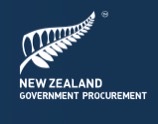There is no doubt that the last two years have been tough and bought many challenges. Whether it is implementing new and ever changing Covid regulations, or having to make big changes to workforce structure, it has been a struggle for many businesses just to keep their head above water.
Now, nearly two years on from the emergence of Covid-19, everything has changed from our traditional way of working. Things are starting to settle into a new normal, however, with this new norm comes significant changes to the way that we work and the economic environment that we are working with.
As we begin to get used to our new environment in 2022, business will be begining to ask the question “are we still on track to meet our strategic objectives?” And, “how does our Employment Relations Strategy need to change to ensure that we still are moving forward, meeting our strategic objectives cohesively?”
Some things worth considering are:
- Working from home has become more prevalent, and this has meant that new ways of keeping connected have developed, as well as new ways of ensuring and measuring productivity levels. Is this way of working conducive to meeting our business objectives? Is additional training required? How do we need to adapt? How is this impacting on our staff/relationships?
- Unemployment levels are low, employee absences are high, we have restricted access to migrant labour and less absence cover through labour hire. How does this impact on our strategy? Do we need to consider fresh ways to resource the work, including reviewing work patterns and organisational structure?
- We are currently experiencing the highest level of inflation for 30 years, and the threat of rapidly rising interest rates mean that employees may begin to shift their priorities. Pay increases and incentive schemes may become more important than ever. Employees may begin to look elsewhere if they are unsatisfied, which has become increasingly easier due to the increased labour shortage and opportunities available. What sets us apart from the rest? How do we create an environment conducive to people wanting to come and work with us and stay with us?
Unions have high expectations for wage and benefit increases in collective agreement negotiations and are increasingly willing to take industrial action if their expectations are not met. Does our Collective Bargaining Strategy support our business strategy and set us up for long term success?
It is important for businesses to be considering your ER Strategy now – it will help guide your decision making in times of high stress and difficulty, and ensure that you stay on track to meeting your short and long term goals.




